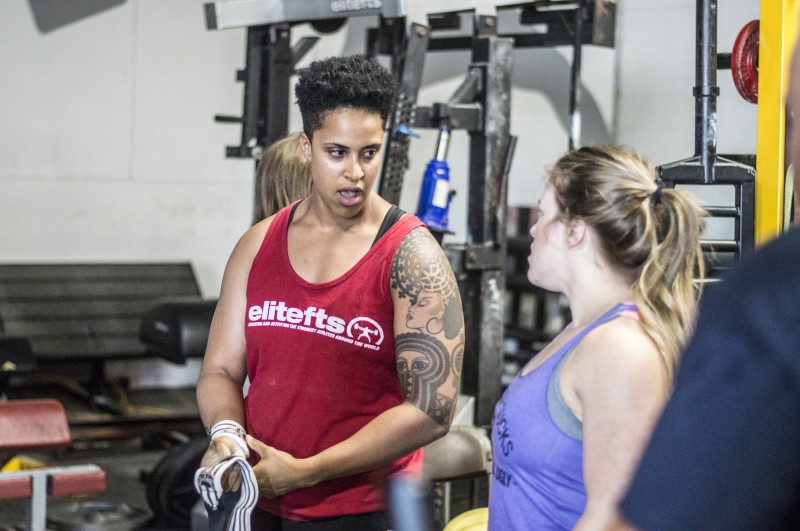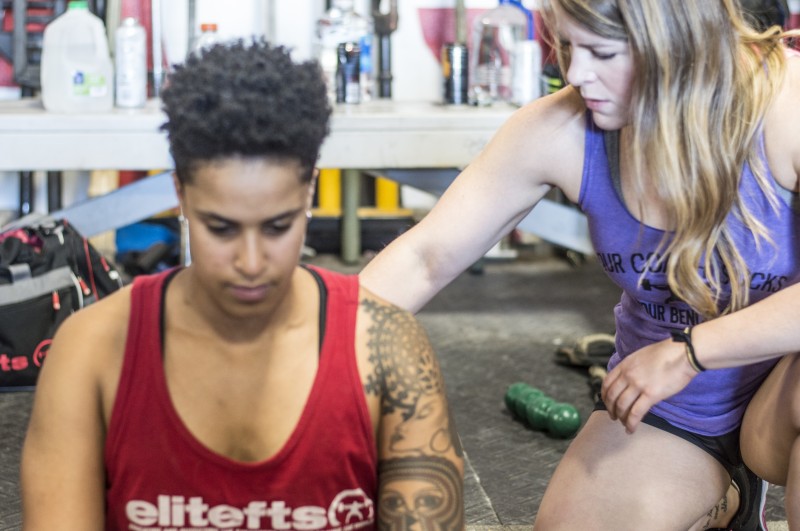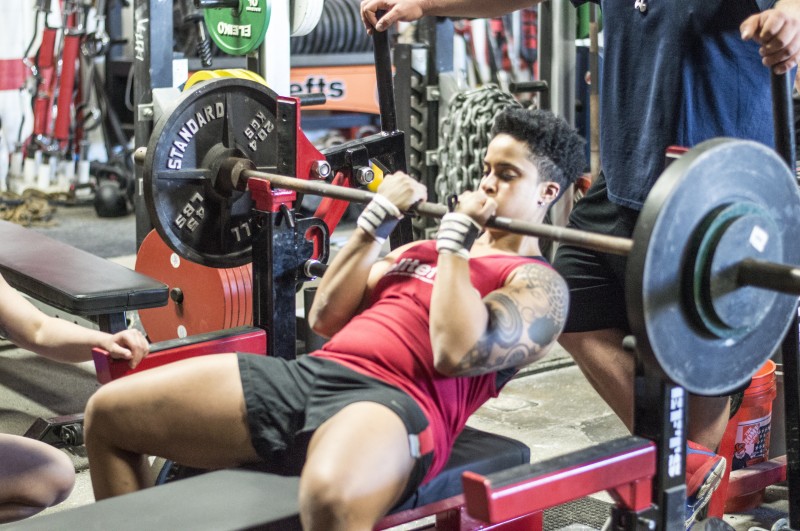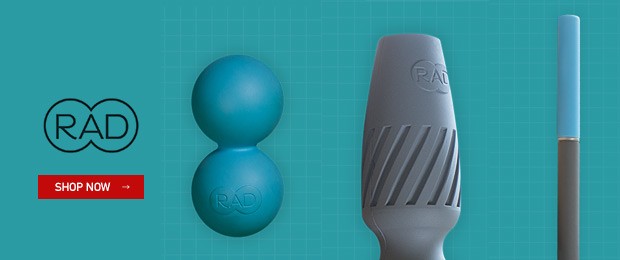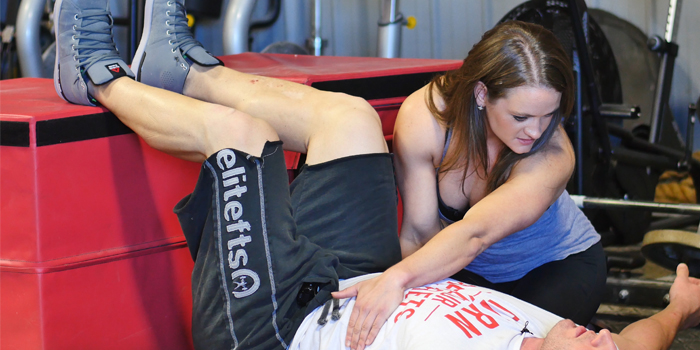
I think one of the coolest things about being part of EliteFTS is the door it opens to talk with people, namely you, about training, injuries, life, whatever. And that open door is invaluable — that’s why we all abide by the “live, learn, pass on” philosophy. I’m pretty honest with people, and almost invariably when someone is talking to me about an injury, I am asked “I’ve been working with this PT or chiropractor, but I’m not sure if things are improving. How can I tell if I’m in good hands or if I’m wasting my time and money?” Read between the lines and that comes out as, “Is this person giving me too much of their own kool-aid?”
RECENT: Boss of Bosses 3 — My First Meet Representing elitefts
We put effort into finding a good coach. We want to find one who produces results but also jives with our personal belief system, communication style, and philosophy. If you are going to put the time into training to be competitive in this sport, you owe it to yourself to know how to determine if the person responsible for providing you the tools to keep you healthy is worth your time. The role and thought process of PT’s is changing quickly. I wouldn’t be surprised if in the next few years it becomes common for athletes to be working with a PT consistently for routine maintenance, as well as for injury rehabilitation, similar to our year-round coach.
This may sound critical, but I do believe it’s honest:
The identity crisis of PT’s or rehab experts in strength sports is similar to the quickness and availability of online coaches and trainers we are experiencing, but not yet to the same degree. I do not doubt the good intentions or true desire to help. You don’t get into this profession with a selfish heart. You won’t make it through school. There’s a dichotomy between the over-zealous/undereducated, and qualified but quiet in advertising their ability. Unfortunately, being kind hearted doesn’t get you better; sorting through the available help can be challenging when a lot of the good voices are often quieter. If you find yourself wondering if your PT is one that will take care of you in the capacity you need, I’ve got a few strategies to help you make that decision. If not, there are a few things you can look into when determining who IS a good fit for you. Remember, your PT is your ally, and has the potential to have an incredible effect on your performance. Be choosy. Look at your PT the way you’d look at a training partner in selectivity.
The best PT’s I have seen or worked with personally or professionally embody the following qualities:
Communication: This seems obvious but there are nuances that you should look for. In a nutshell, you need to be able to address the elephant in the room, whatever that is. If you’re going to be working towards a goal there has to be 100% transparency because your relationship is going to be a partnership. It MUST be collaborative: you need to be understood, and to understand. Your PT should be able to listen, and clarify or acknowledge what you are giving them in a way that ensures you are building trust, and needs to be direct in communicating with you what the expectations are going forward.
Your needs as an athlete will be fluid: your communication needs to be built on a common language so that you two have a platform to go off of. If you feel you do not understand the plan, the rationale, or simply “connect” with your PT, chances are you may benefit from looking elsewhere. This does not mean you will always “like” the answer you are given but you need to have a platform where the cards are on the table to discuss. Your PT should respond well to questions (not threatened), be eager to educate to the degree that you desire, and speak to you in a way that offers you hope. Period. If you have no hope and belief that things can get better after speaking with your PT, 99% of the time, find another teammate.
Vision: We know where we want to go. Details are important- hugely. They’re the steps we take, but ultimately your PT should also have some idea of where the steps are taking you, not just “now,” but long term, what you need to stay healthy. You have a choice- if you’re at a point where you’re just trying to get through a meet, then the game you play may be a matter of just getting to the platform. After that, however, you shouldn’t feel like whatever kool-aid you’re drinking is just getting you by. You’re asking for their help to actually improve- so if their vision of where to take you isn’t actually taking you towards your goals to some degree, a measureable one, check in with them and make sure their vision and where you’re heading match. If they don’t, you can have a conversation with clear, objective desired outcomes (e.g. a new treatment plan with tangible X goal that they will help you develop), OR, find a different partner.
Fluidity in problem-solving: This coincides with vision a little bit, but our job is to bring you from a place of injury or dysfunction to a better place, and to have an idea of how to get you there. That’s the big picture vision. But if you express a concern and we cannot adapt the vision OR explain to you the overall process, we may be more stuck on being ‘right” than actually hearing you. Part of this comes with trust, but part of the fluidity needs to come from the fact that as you adapt and change, the steps taken to achieve the end goal may also need to change. If a new problem develops, or if you aren’t achieving change that indicates improvement to you, you need to be able to speak honeslty with your PT, and have a conversation about when/why you may want to change the plan. If they are too married to one idea, one school of thought, or one way and it clearly isn’t working for you, you owe it to yourself (and to them!) to look for other help.
This may seem obvious, but a lot of athletes I’ve spoken to seem to have been talked into giving something more time rather than perhaps recognizing that maybe they need something different. I appreciate this, as jumping ship is equally as frustrating, but there’s a time and place for both. Ask your PT what kind of a timeline is reasonable for change, and hold us accountable to that.
Teamwork: This whole process is about you and this person working together. Period. Please, if someone you are working with says they do not work in a team because it holds them back or have an issue with “being managed,” raise a red flag. Having high standards for which team to be a part of is necessary, but generally those who can (and do) work in a team exhibit qualities of honesty, accountability, and humility that are absolutely imperative in what we do. I have never met someone who cannot work well with people and has the ability to put themselves in your shoes as an athlete. Pride has very little place here. Think about it this way: poor team work generally means poor people skills. You are wasting your time here.
Patience/Resolve: you’re going to get frustrated with the process at some point. I can absolutely promise you that. There is absolutely nothing wrong with that and it would be unrealistic to expect you not to. Your PT needs to be able to address you as a patient, and as a person, and acknowledge what this means to you. Your PT should not be shaken or offended by this. Within reason, we should be able to handle this, and redirect the frustration into something constructive. I think this is honeslty the single most important part of rehab. It’s so easy to dwell on the things that don’t feel good, and all it takes is one or two really bad days to feel like NOTHING is improving. Let us help you through this- we’re good at reframing, and you should walk away from these honest conversations feeling like you have more control and empowerment over your situation.
RELATED: Acumobility — A Game Changer in Mobility
If you’ve decided you need to seek help elsewhere, there are a few key questions you can ask to help you determine if someone is going to be a good fit for you. In general, there isn’t a right or wrong way to answer these. The biggest take away is that they need to be agreeable to you; there are actually studies done that demonstrate belief in a system is a huge factor in its overall success, regardless of appropriateness of the system itself.
How can you help me train around this? You may or may not like the answer itself, but you should appreciate the delivery of the answer. This will say a lot about your PT and their general philosophy, as well as communication style and education style.
What are your general philosophies? There are a lot of really great treatment methods/ideologies out there, and generally, MOST have a lot of merit provided effective application. Certain ones I appreciate more than others include PRI, DNS, FMS/SFMA, among others. Honestly, those methods are really just systems that help us look at movement. Personally I feel that adhering too strictly to one system makes it really difficult to appreciate full movement outside of that box, so it may be worth asking your PT not only their general philosophies but how strictly they adhere to whatever system they use, IF they use one.
When is your next competition/meet? A few things here. How a person talks about training, or anything really, also says a lot about their personality and general communication style. If you tend to connect with someone who is more even keeled, or super bubbly, or more tapered on the emotional end, this is an ok data point to get. The other components here can be sort of obvious: someone who does what we do and trains for it is going to understand your situation a whole lot more. It may also be important to recognize/ask if when their training ramps up, they have the mental bandwidth to take on more work. Ask for an honest answer if you feel you aren’t getting it.
How will we know if things are improving? What does this look like? Read vision above. When I worked with Casey earlier this year, I outlined to him what the plan was going to be. 1) address the why (pelvis position), 2) let the tissue heal, 3) drive new pattern. We picked a few things that would be key landmarks to demonstrate improvement to him, and I tried my best to paint him a picture of what all the data points we were looking at formed. Every clinician is going to answer this differently, and obviously on a case by case basis, but there needs to be an inherent accountability to make sure your’e getting what you need. Again, you may not necessarily “like” the answer, but there should be sound logic behind it.
How often do we communicate? This absolutely has to fit. You may be someone that wants to communicate one time at the end of the week, your PT may be someone that wants updates every session, or vice versa. If it doesn’t fit, this is the card that’s generally MOST flexible. Outline your expectations, or seek to understand why we have ours.
Your PT has tremendous ability to make things so much better for you, but you need to be assertive in making sure you’re getting what you want and need, just like any other relationship. Put in the work to find a good fit and the dividends can pay off huge in the long term.










